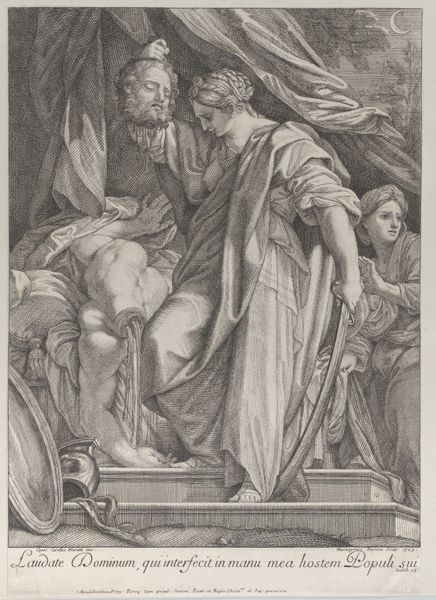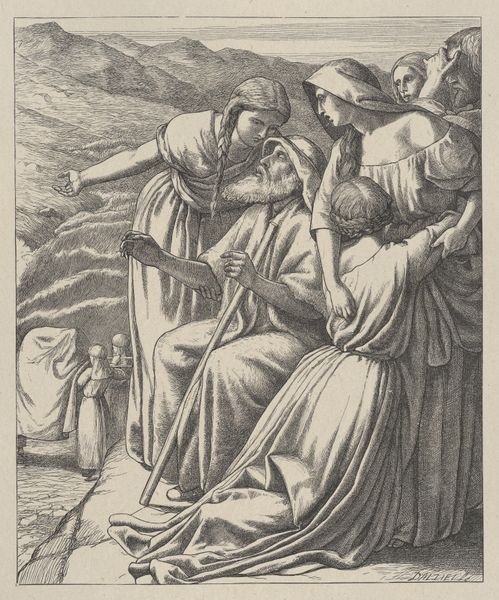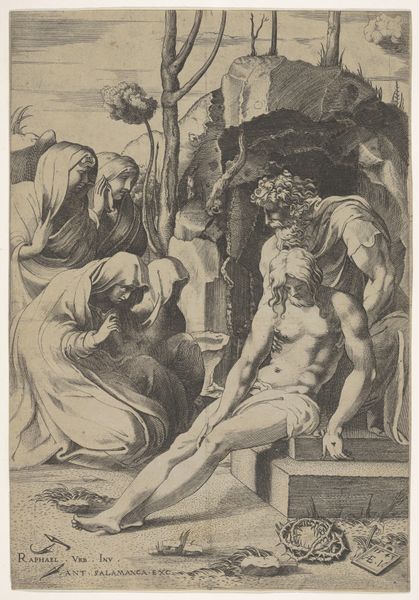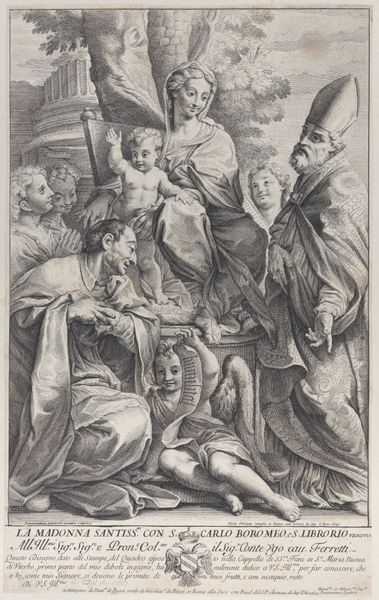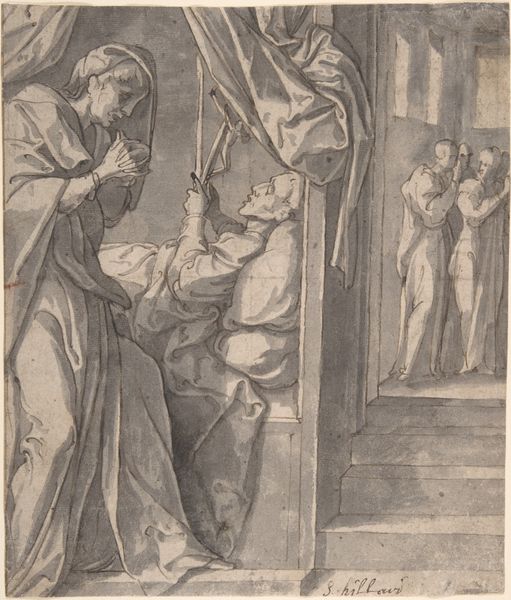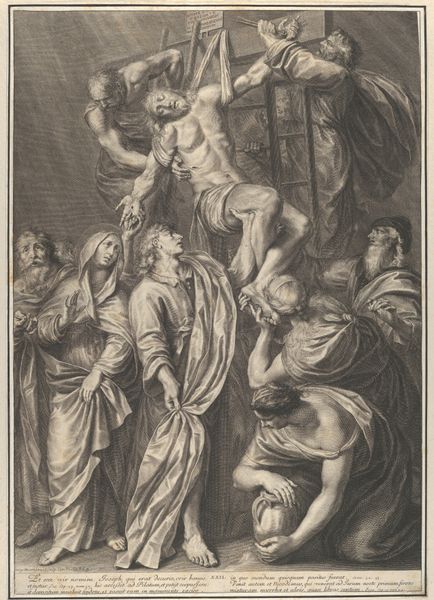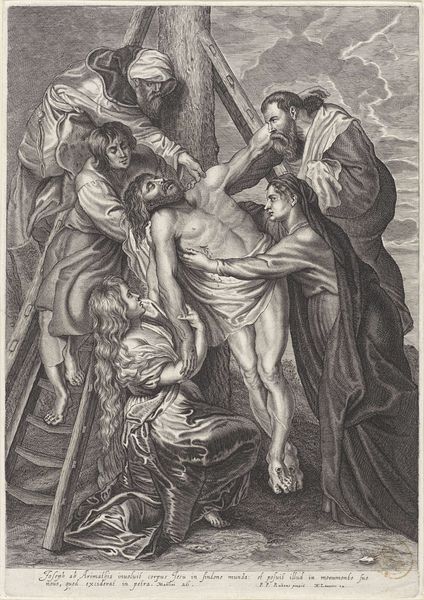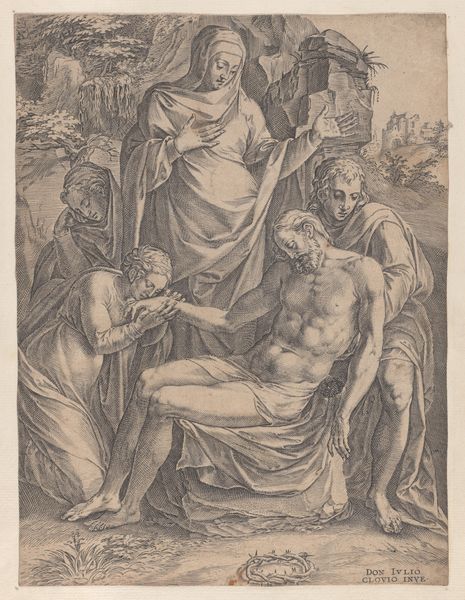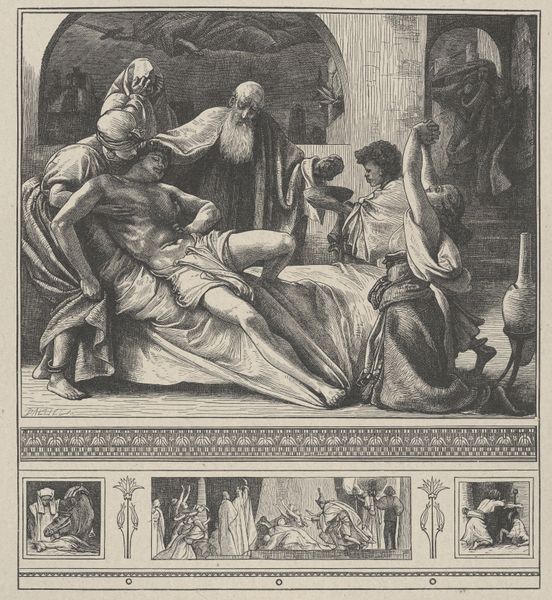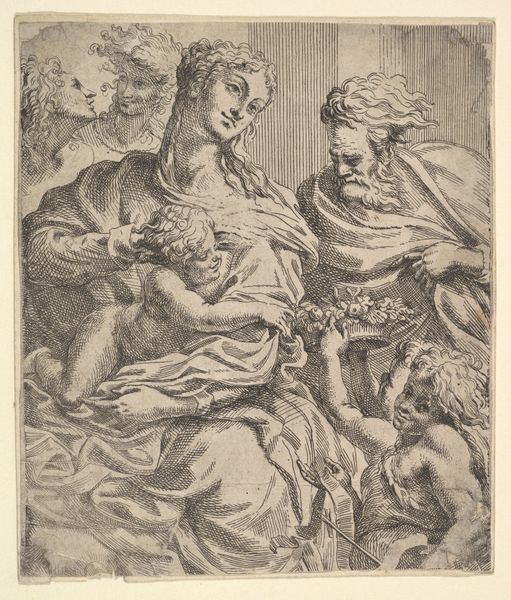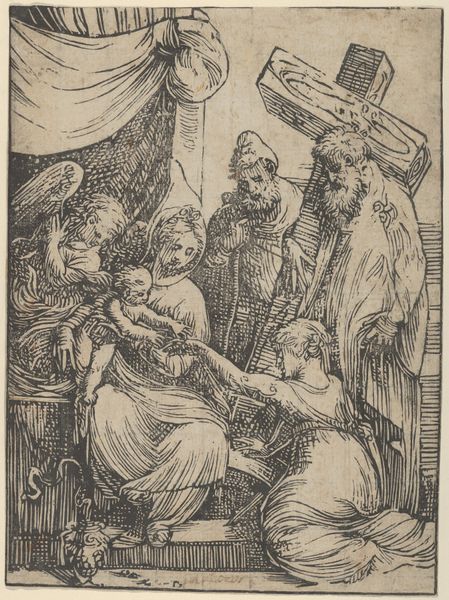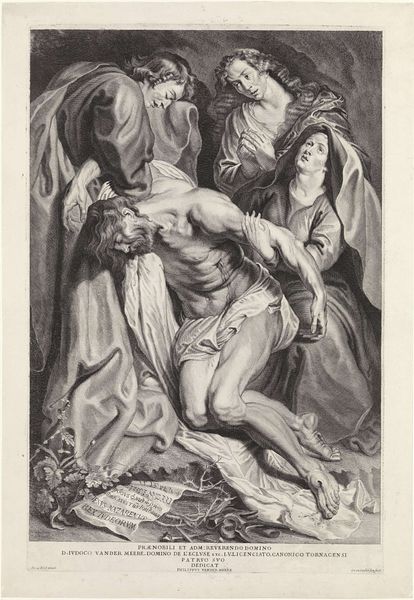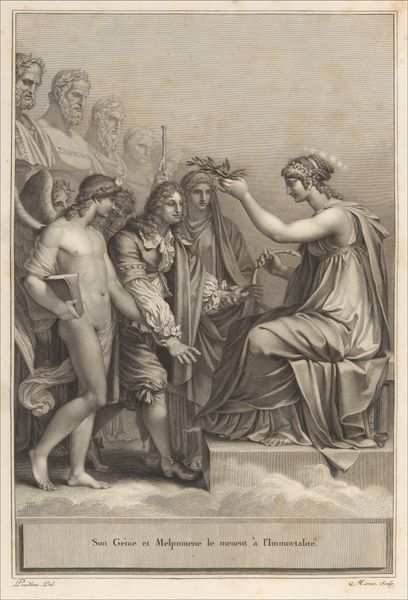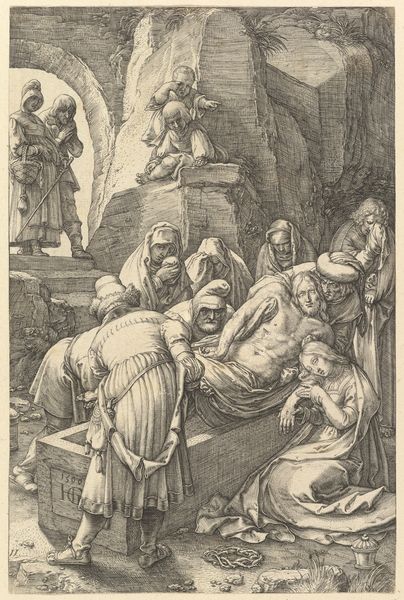
drawing, print, engraving
#
drawing
#
baroque
# print
#
figuration
#
line
#
history-painting
#
engraving
Dimensions: sheet: 10 7/16 x 8 1/4 in. (26.5 x 21 cm) plate: 8 3/8 x 5 13/16 in. (21.2 x 14.8 cm)
Copyright: Public Domain
Curator: This is Johann Georg Bergmüller’s "Judith slaying Holofernes," a Baroque engraving created sometime between 1705 and 1762. Editor: Even in monochrome, the scene is immediately unsettling. The darkness pools in the corners, the sharp lines accentuate the violence. It’s almost claustrophobic. Curator: Bergmüller's choice of engraving is masterful. Observe the strategic use of hatching and cross-hatching to create tonal variations and dramatic shadows. Note how the textures, from the fabrics to the exposed flesh, are carefully delineated. The composition emphasizes the contrast between Judith’s calm, almost detached, expression and the gruesome act she’s committed. Editor: Absolutely. It's Judith's gaze, averted from Holofernes's decapitated body, that chills me. It speaks volumes about the burdens of resistance. It is about more than the lines and textures—this is Judith taking back power from the patriarchal military commander. Bergmüller uses her story to represent female defiance against male oppression, religious persecution, and the horrors of war. We need to consider who that was meant for and in what context. Curator: Certainly, the biblical narrative of Judith is potent, particularly its articulation of female agency. Yet, from a purely formal standpoint, look at the way her drapery is rendered. The meticulous pleating, the fall of light—they demonstrate Bergmüller's virtuosity with line and form, speaking to Baroque aesthetics more broadly. This elevates it beyond simple historical representation; it is about visual art. Editor: But isn’t that elevation itself a reflection of historical power dynamics? This biblical tale carries so many interpretations, including its exploitation and distortion by oppressive structures throughout history. Seeing Judith only through formal components risks ignoring the image's more challenging interpretations of identity, survival, and retribution. Curator: I see your point, however the meticulous details like the texture in the tent cloth do carry weight here. Both interpretations create meaning when they intersect. Editor: Right. Curator: Perhaps in analyzing them side by side, we more deeply understand the work's complexity. Editor: I couldn’t agree more, reflecting on how "Judith Slaying Holofernes" embodies both aesthetic technique and urgent conversations is crucial for any observer.
Comments
No comments
Be the first to comment and join the conversation on the ultimate creative platform.
